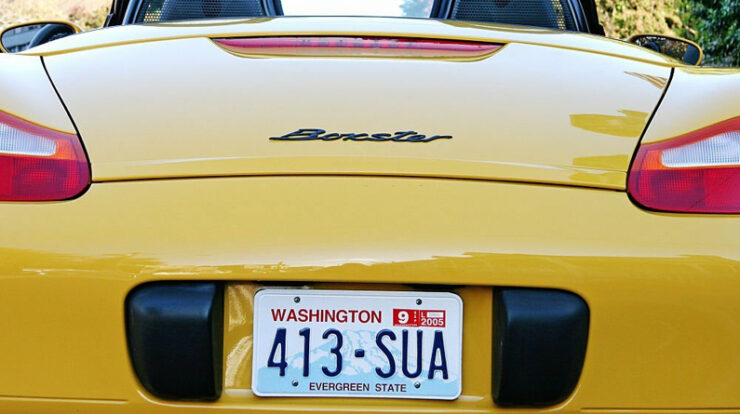Liability Coverage basically consists of 3 main parts: Liability insurance for personal injury; insurance for property damage liability (liability insurance for property damage); and uninsured/underinsured Motorist (insurance for drivers without insurance or their coverage is too low)
- Liability insurance for personal injury – When you are the cause of the accident, then your insurance will pay damages for health care, loss of earnings, and injury to the opponent. This coverage does not compensate you.
- Property damage liability insurance – This subsection compensates for material damage to others’ properties when you cause damage. The physical damage includes vehicles, buildings, trees, animals, etc.
- Uninsured/underinsured Motorist coverage – Your insurance will compensate you if the accident was caused by the other driver who doesn’t have insurance or their insurance is insufficient to pay damages. It includes “Touching and fled – Hit and run”.
How does Liability coverage work?
In the “Liability coverage” of insurance, contracts will be registered as follows: 30/50/20 (or 100/300/50 or, depending on the needs of each person). Basic 100/300/50 means: insurance will compensate up to $ 100,000 for each of the injured people; $300,000 maximum compensation whether more than 3 people were injured in the accident and the maximum compensation of $ 50,000 for property damage. The amount of insurance you pay for this account is low or high depending on your choice.
For example, when you choose your 30/50/20 and you cause an accident with injuries to passengers in your car and the other vehicle’s driver, your insurance will pay for a maximum of $50,000 per the people injured in the accident. Assuming the other car’s damage worth more than $ 20,000, and the disease of every person charged more than $ 25,000 / person, you can be sued to claim additional compensation.
No-Fault States
Some states have No-Fault laws. It means that when the accident occurs, each party reports their insurance claim, regardless of who caused the accident. Normally this kind of insurance has 2 types:
A – Personal Injury Protection – insurance will pay a minimum amount for the driver and all passengers in the car or relatives. Compensation includes medical expenses, therapy after the accident, loss of earnings, costs of death, or relatives of those who died in the accident.
B – Residual Injury Liability Coverage – This clause protects the family and the person sitting in your car if the claim is for an accident caused by you.
You should remember the NO-FAULT LAWS only aims to minimize lawsuits traffic accidents.
The other insurance clause
1 – Medical Payment Coverage – If you are in a car accident, this coverage covers the costs for the hospital for you and your family or your passengers. It also pays medical insurance costs, if you are walking and being hit by a car. It pays for the cost for surgery, orthopedics, therapy after the accident, dental, funeral, etc.
2 – Rental Reimbursement coverage – It is also named Car Rental Insurance and will cover the cost of the rental vehicle while your car is being repaired after an accident. Usually, this insurance only pays a maximum rental of 30 days or $ 1,500, depending on your choice.
3 – Roadside Assistance or Towing coverage – This insurance pays for the cost of towing your vehicle due to a mechanical roadside breakdown. This insurance also pays for the unlocked of the car when you forget the keys in the car.
4 – Umbrella Insurance – Those with more assets or their profession requires high liability insurance, they will buy this type of insurance. Typically, an insurance contract is valid from $ 1 million or more. This insurance includes insurance general: Buildings, vehicles, boats, professional, commercial facilities, etc. Umbrella Insurance requires buyers to have one car insurance policy that has a minimum value depending on the company selling the insurance.
Insurance prices are relatively cheap and higher compensation. That is, after the vehicle insurance compensation is insufficient, the Umbrella Insurance compensation completes the remainder of the contract limit.
Coverages for your car
This clause has two main components:
1 – Collision Coverage – This insurance compensates for your car when another car hits you, or you hit a fence, a pole, or in short, hit any object. Insurance does not pay compensation if your car is burned, stolen, vandalized, etc.
2 – Comprehensive Coverage – This insurance compensates for your car no matter how damaged for whatever reason except a collision. If you purchased Comprehensive Coverage, you are not required to purchase Collision Coverage Terms
Car insurance Deductible – Deduction
When you buy car insurance, the broker will ask how much deductible you want: $ 100, $ 500, or $ 1,000, etc. This is the amount of money you would pay out of pocket in the event of an accident; the rest would be paid by the insurer, up to the policy limits. If you do not buy “Collision or Comprehensive coverage”, there is no deductible. For example, your car is only worth no more than $1,000 USD, it doesn’t make sense a high deductible. Instead, on a priced vehicle, a higher deductible worth it because savings on insurance premiums are significant.
To get a cheap auto insurance policy under 100 a month, compare multiple rates online and select the one that best suits you. Start saving on your car insurance right now!






